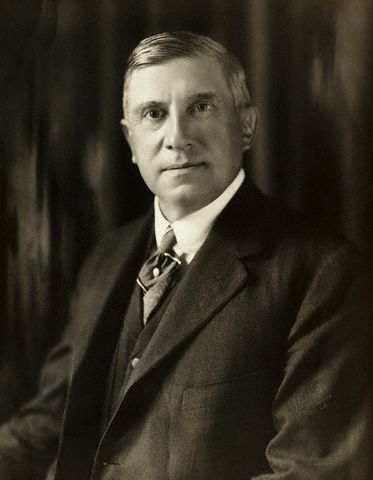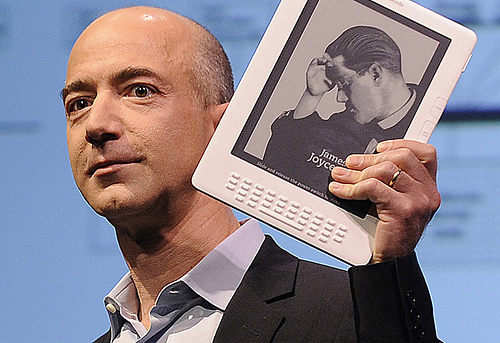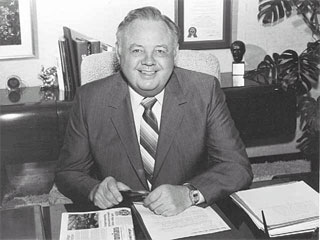Posts Tagged ‘motivation’
You Don’t Choose Your Passions, Your Passions Choose You
Great leaders are passionate. They possess an absolute love for what they do. Steve Jobs (Apple Computer) observed, “I don’t think of my life as a career… I do stuff. I respond to stuff. That’s not a career — it’s a life!” [1] Howard Schultz (Starbucks) concurred when he said: When you love something, when you care so much, when you feel the responsibility… you find another gear.”
James Duke (American Tobacco Company) enthusiastically expressed his passion, when he noted, “I hated to close my desk at night and was eager to get back to it early next morning. I needed no vacation or time off. No fellow does who is really interested in his work.” [2]
Ray Kroc (McDonald’s) couldn’t say enough about his fifteen-cent hamburgers, and Sam Walton (Wal-Mart) was equally passionate about the value that Wal-Mart offered to the average person. Both were evangelists for their companies.
Another passionate evangelist was James Casey (United Parcel Service), as anyone who knew him understood that “it just took the right topic to get him excited. And that topic was packages. He loved everything about them–the care that went into their wrapping, the sense of mystery about their contents, the delight in opening them. A 1947 New Yorker profile found him observing a department store’s package-wrapping station and waxing enthusiastic–and then some–on the proceedings: ‘Deft fingers! Deft fingers wrapping thousands of bundles. Neatly tied! Neatly addressed! Stuffed with soft tissue paper! What a treat! Ah, packages!’ ” [3]
Why is passion so important and why does it contribute so much to one’s success? “Passion is about our emotional energy and a love for what we do. Without passion it becomes difficult to fight back in the face of obstacles and difficulties. People with passion find a way to get things done and to make things happen, in spite of the obstacles and challenges that get in the way.” [4]
Herb Kelleher (Southwest Airlines) stressed the importance of passion when he stated, “When we talk to other people about Southwest Airlines, I always tell them that it’s got to come from the heart not from the head. It has to be spontaneous, it has to be sincere, it has to be emotional. I said, ‘Nobody will believe it if they think it’s just another program that was conjured up for six months time and then you’re going to drop it. The power of it in creating trust is that people have to see that you really radiate, that it’s a passion with you, and you’re not saying these things because you think they are clever or a way to produce more productivity or produce greater profits, but because you really want things to go well for them, individually.” [5]
Jeff Bezos (Amazon) made the following observation about how passion works, and why it motivates so well. “You don’t choose your passions, your passions choose you… One of the huge mistakes people make is that they try to force an interest on themselves. If you’re really interested in software and computer science, you should focus on that. But if you’re really interested in medicine, and you decide you’re going to become an Internet entrepreneur because it looks like everybody else is doing well, then that’s probably not going to work. You don’t choose your passions, your passions choose you. One of the reasons you saw so many companies that were formed in 1998 or 1999 fail is that they were chasing the wave. And that usually doesn’t work. Find that area that you are interested in and passionate about—and wait for the wave to find you.” [6]
[1] Fry Stephen, The iPad Launch: Can Steve Jobs Do It Again? (Time Magazine, April 1, 2010)
[2] Klein Maury, The Change Makers (Henry Holt and Company, LLC, New York, NY 2003) p. 99-100
[3] Lukas Paul, Overfelt Maggie, UPS United Parcel Service James Casey Transformed a Tiny Messenger Service into the World’s Largest Shipper By Getting All Wrapped Up in the Details of Package Delivery (Fortune Small Business, April 1, 2003)
[4] Ambler George, Steve Jobs and His Leadership (The Practice of Leadership, March 30, 2008)
[5] Yeh Raymond T. with Yeh Stephanie H., The Art of Business: In the Footsteps of Giants (published October 1, 2004)
[6] Walker Rob, Jeff Bezos Amazon.com – America’s 25 Most Fascinating Entrepreneurs (Inc. Magazine, April 1, 2004)
Excerpt: Great! What Makes Leaders Great: What They Did, How They Did It and What You Can Learn From It (Majorium Business Press, Stevens Point, WI 2011)
T imothy F. Bednarz, Ph.D. | Author | Publisher | Majorium Business Press
imothy F. Bednarz, Ph.D. | Author | Publisher | Majorium Business Press
Author of Great! What Makes Leaders Great: What They Did, How They Did It and What You Can Learn From It (Finalist – 2011 Foreword Reviews‘ Book of the Year)
Linkedin | Facebook | Twitter | Web| Blog | Catalog |800.654.4935 | 715.342.1018
Copyright © 2013 Timothy F. Bednarz, All Rights Reserved
Leading By Example
A developmental milestone is reached when the leader is able to build trust and motivation with their employees to the degree that they are willing to openly follow their direction regardless of circumstances. This is not achieved until a leader is able to demonstrate—through personal example—that they have earned their employee’s respect and admiration.
The practice of interactive leadership provides leaders with a distinct set of advantages that cannot be realized without their active presence. This enables them to establish trust, credibility and respect. These are all elements that buttress a leader’s ability to personally lead their organization and motivate his or her employees to follow.
It is one thing to lead an organization and quite another to motivate individuals to follow. The practice of interactive leadership demonstrates the character, ability and integrity of a leader and motivates individual employees to follow.
The practice of interactive leadership spotlights the individual leader and gives them the platform to shine by motivating their employees and effectively moving the organization forward. Interactive leadership is also the practice of leadership by example, and places all a leader says or does under the close scrutiny of their employees. Effective leaders use this to their advantage by practicing the following techniques:
Sell the Vision
In the storms of change and transformation, the leader’s compass is his or her personal vision of the organization, its goals and potential accomplishments. Interactive leadership provides leaders with ample opportunities to “proselytize,” or sell their vision to their employees every time the opportunity arises. This often means leaders are constantly talking about their vision and the positive changes that will take place when it is achieved.
The importance of a leader selling his or her vision cannot be overemphasized. As a leader, the goal is to motivate and lead employees. An essential part of motivation is selling employees on the vision and getting them to individually accept and “buy into” that vision as their own. Since organizational transformation in the face of change is normally a lengthy process, leaders must take every opportunity to remind their employees of the direction in which they are headed, and motivate them to continually work toward the accomplishment of their shared vision.
Walk the Talk
Interactive leadership places leaders under the microscope of employees who are continually assessing integrity and credibility. The practice of interactive management allows leaders to demonstrate their true character and build trust and loyalty with their employees. This is accomplished by a consistency in words and actions—the measure employees use to gauge a leader.
Consequently it is crucial for leaders to make certain they follow through on what they promise. If this is not possible, they have a good reason and take the time to explain why their promise cannot be kept.
Trust, credibility and loyalty are established when employees, associates and superiors know they can take what a leader says “to the bank,” and that what he or she promises will be done. This trust is strengthened and a strong bond created when a leader clearly demonstrates by actions that he or she places their employee’s interests above their own personal agenda.
Empower and Delegate
The practice of interactive leadership strengthens trust between leaders and employees when leaders actively empower employees and delegate tasks and assignments as needed. Empowering employees, groups and teams “on the fly” and delegating assignments when feasible allows leaders to swiftly respond to the rapid pace of change—as well as resolve problems and frustrations as or even before they occur.
Create Urgency
The rapid pace of change creates its own sense of urgency, but as transformation often takes time, leaders must motivate employees by further instilling this sense in them. This is best accomplished when leaders introduce new ideas and concepts, test them quickly, learn from the failures and move on to the next idea. It is through this process of continual adaptation and refinement of ideas and concepts that a sense of urgency is developed that keeps the organization moving forward toward transformation. In the absence of this sense of urgency it is easy for employees to fall into complacency.
Openly Communicating
Interactive leadership is built upon open communication and the ability of leaders to actively listen and respond to feedback and ideas offered by subordinates. This allows leaders to use all of their physical senses to observe and learn firsthand what is happening within their organization and to minimize the distortion of information.
Removing Obstacles
When leaders are ever-present and openly and actively interacting with their employees, they are able to identify and remove frustrations and barriers impeding forward movement.
Leaders openly empower their employees to overcome barriers and delegate the creation and implementation of the solution to them. Often these barriers come in the form of minor problems and issues that can be handled by frontline employees without the direct intervention of the leader. This enables the organization to be more responsive and productive.
Celebrate the Little Successes
The open presence of the leader among his or her employees allows them to plan for short-term wins and successes. These are important since the lengthy term of transformation can cause employees to lose sight of their goals and motivation. The celebration of short-term and minor successes maintains employee focus and keeps them motivated to continue to work toward the long-term success of the organization.
Excerpt: Improving Workplace Interaction: Pinpoint Leadership Skill Development Training Series (Majorium Business Press, Stevens Point, WI 2011) $ 16.95 USD
Related:
Five Critical Steps to Maximize Performance
Performance Plans Create Results and Maximizes Performance
Objectives Allow Managers to Focus on Obtaining Results
For Additional Information the Author Recommends the Following Books:
Performance Management: The Pinpoint Management Skill Development Training Series
Planning to Maximize Performance: Pinpoint Leadership Skill Development Training Series
Maximizing Financial Performance: Pinpoint Leadership Skill Development Training Series
Improving Workplace Interaction: Pinpoint Leadership Skill Development Training Series
T imothy F. Bednarz, Ph.D. | Author | Publisher | Majorium Business Press
imothy F. Bednarz, Ph.D. | Author | Publisher | Majorium Business Press
Author of Great! What Makes Leaders Great: What They Did, How They Did It and What You Can Learn From It (Finalist – 2011 Foreword Reviews‘ Book of the Year)
Linkedin | Facebook | Twitter | Web| Blog | Catalog |800.654.4935 | 715.342.1018
Copyright © 2013 Timothy F. Bednarz, All Rights Reserved
//
Motivation Must Be Personal To Be Effective
All employees are unique in what motivates them to perform to their capacity and excel in their profession. Most will do what is expected of them, but the motivated employee will go to great lengths to exceed expectations. The key is for managers to discover what truly drives their people. Once their motivation is understood, leaders have the power to get the most out of their employees.
Managers often feel there is no need to motivate their employees as long as the pay is adequate. Yet research has demonstrated that the majority of personal motivation is based upon a host of other significant factors such as achievement, recognition, responsibility, personal growth, and advancement.
Compensation is certainly a motivating factor, but it is often linked to these more prime motivators. A poorly designed compensation plan will cause employees to feel unappreciated and not be reflective of their personal achievements. Consequently, many employees link their compensation to their perception of how they are recognized within the organization.
Managers must understand that it is within their power and control to motivate each member of their team to excel.
Managers who wish to maximize their employees’ performance use specific motivators to create an environment in which individuals feel valued for their contributions to the company, know their efforts are appreciated and supported by the organization, and have the desire to achieve higher levels of personal performance. These results can be achieved by nurturing an atmosphere that includes the following elements:
Interest
Managers must take a genuine personal interest in each employee. Although significant, this means going beyond his or her life outside of work. The main areas in which to devote individual attention are in mentoring and nurturing a personal and professional growth as well as in understanding what motivates them. When managers demonstrate an interest in their employees, they are giving and sharing their time, lives and expertise with their employees.
Confidence
Managers who wish to motivate their employees must develop confidence in their abilities. This means allowing employees to experiment with new ideas and techniques while understanding that, as people grow through their experiences, many lessons are best learned through personal mistakes and failure.
Managers must also have the confidence that their employees can develop realistic and attainable plans and allow them to work those plans without interference or micromanagement. Individuals who know they have the liberty to perform their jobs without fear of retribution if they falter are more motivated and empowered to stretch the limits of their capabilities.
Challenge
Employees must be challenged to stretch their personal and professional limits. This includes personal and professional development in areas of vocational knowledge, skills and expertise.
Pride
Managers must maintain a sense of pride in their team, their company and the products they sell. Employees must continually sell themselves on the value of the company and its products or services. If employees aren’t sold, they will have difficulty convincing others of the company’s worth. Additionally, as people need a spark to overcome daily stress and adversity, managers must build and nurture a passion in their employees to achieve and succeed.
Bonding
Managers must establish a sense of fellowship between the individual members of their workplace, which thereby creates comradery and emotional support. Successfully done, this builds a strong team atmosphere and healthy sense of friendly competition that is beneficial to the organization.
Reward and Recognition
Managers should use fair and consistent standards with which to measure performance and base rewards and recognition. Employees should be evaluated against their own performance, and, for best impact, appropriate recognition should be given immediately.
Appreciation
Beyond tangible rewards and recognition, managers must demonstrate their personal appreciation for the efforts and contributions made by their individual employees. They should also avoid taking the top performers on their team for granted. Because these individuals need little attention or direction, they are often overlooked as managers invest more time with more inexperienced or problematic employees. To stretch their personal abilities, the best of the group also need ongoing recognition, appreciation and encouragement.
Related:
16 Ways to Motivate Employees and to Celebrate Their Successes
Leaders Have Three Motivational Tools Available to Them
Recognition Must Be Given Liberally, Frequently and Publicly
Excerpt: Motivating Employees: Pinpoint Management Skill Development Training Series (Majorium Business Press, Stevens Point, WI 2011) $ 17.95 USD
T imothy F. Bednarz, Ph.D. | Author | Publisher | Majorium Business Press
imothy F. Bednarz, Ph.D. | Author | Publisher | Majorium Business Press
Author of Great! What Makes Leaders Great: What They Did, How They Did It and What You Can Learn From It (Finalist – 2011 Foreword Reviews‘ Book of the Year)
Linkedin | Facebook | Twitter | Web| Blog | Catalog |800.654.4935 | 715.342.1018
Copyright © 2013 Timothy F. Bednarz, All Rights Reserved
Recognition Must Be Given Liberally, Frequently and Publicly
In some companies, under the premise that they will be perceived more meaningful, rewards and recognitions are given so infrequently as to in fact be meaningless. In order to be effective in generating long-term, concrete results, such rewards, recognitions and motivation must be given liberally, frequently and publicly. They should be fun, uplifting and encourage all members of the workplace.
A critical aspect of leadership is the manager’s role as cheerleader. Leaders need to keep their employees motivated and emotionally prepared to do business in a marketplace fraught with intense competition, rejection and failure.
There are both tangible and intangible aspects of motivation. The intangible aspects of encouraging words and pats on the back, although not insignificant, can be quickly forgotten, while the tangible aspects are visible and durable.
Napoleon discovered long ago that men would walk into combat and perform daring feats for a piece of ribbon and scrap of metal. Managers should learn from this lesson: it’s not the value of a reward or recognition, but what that reward stands for. People will move mountains for the right reward.
The late Curtis Carlson, founder of Radisson Hotels, T.G.I. Friday’s, Carlson Wagonlit Travel and a host of other hospitality companies, was a master motivator. During an interview on CNN’s Pinnacle years ago, he discussed the tangible aspects of motivation.
Carlson started his career as an employee for S&H Green Stamps, a company that used stamps as a retail incentive tool. In his capacity as an employee, Carlson achieved a specific sales goal and was awarded an engraved watch. He observed that everywhere he went his wife made him take off his self-described $20 watch so that she could display it to their friends. He took this lesson with him in his rise to the top of corporate America.
The lesson Carlson learned was the tangible value of motivation. He said that one could give an employee a $20 bonus on Friday, and by Monday it was spent and forgotten. But if one gave them a framed certificate or some other tangible form of recognition, it was there as a constant reminder of their accomplishments.
A very visible example of his practice is seen at T.G.I. Friday’s. A tradition in the company is for the employees to sport colorful vests full of motivational pins from all of the restaurants they’ve worked at. Carlson was a skillful practitioner of tangible motivation: he knew the public display of recognition and accomplishment had an enduring effect long after the individual was honored.
Managers can take a page from the Carlson book and create their own tangible motivation program.
As Carlson learned, the action doesn’t have to be expensive, only tangible, frequent, visible and durable.
People love to be recognized and honored. Most have a wall of items at home or in the office to show the world what they’ve achieved and accomplished. They want others to recognize that they have made a difference.
Many managers will use monetary awards or gifts as incentives—some to a great degree, such as Mary Kay Cosmetics, who awards their top employees pink Cadillacs.
As Carlson learned, money or a disposable gift such as food, a car wash or a trip is quickly forgotten. Instead managers should consider ideas like certificates, pins, coffee cups and other items that will be used and remain visible in the workplace as motivational tools. Some organizations have used items such as gold plated spark plugs as symbols of accomplishment.
Another key to tangible motivation is frequency. Carlson learned that to be effective, recognition must be as frequent and public as possible. Tom Peters discussed this concept in his book, Catching Someone Doing Something Right.
Too often, managers only identify the negative aspects of their employees’ performance. Peters talks about turning this concept around by looking for and immediately recognizing the positives.
The final aspect of motivation is public recognition, which builds self-confidence and self-esteem while fostering team spirit and a strong sense of comradery.
There are many sides and aspects to motivation, but the fun and frivolous aspects of public and tangible motivation do work. Managers will be amazed at the amount of effort their employees will expend to earn a piece of paper or inexpensive knick-knack.
Related:
16 Ways to Motivate Employees and to Celebrate Their Successes
When Motivating Employees, Expectations Are Everything
Excerpt: Motivating Employees (Majorium Business Press, Stevens Point, WI 2011) $ 17.95 USD
T imothy F. Bednarz, Ph.D. | Author | Publisher | Majorium Business Press
imothy F. Bednarz, Ph.D. | Author | Publisher | Majorium Business Press
Author of Great! What Makes Leaders Great: What They Did, How They Did It and What You Can Learn From It (Finalist – 2011 Foreword Reviews‘ Book of the Year)
Linkedin | Facebook | Twitter | Web| Blog | Catalog |800.654.4935 | 715.342.1018
Copyright © 2013 Timothy F. Bednarz, All Rights Reserved
Leaders Possess an Absolute Love for What They Do
Great leaders are passionate. They possess an absolute love for what they do. Steve Jobs (Apple Computer) observed, “I don’t think of my life as a career… I do stuff. I respond to stuff. That’s not a career — it’s a life!” [1]
Howard Schultz (Starbucks) concurred when he said: When you love something, when you care so much, when you feel the responsibility… you find another gear.”
James Duke (American Tobacco Company) enthusiastically expressed his passion, when he noted, “I hated to close my desk at night and was eager to get back to it early next morning. I needed no vacation or time off. No fellow does who is really interested in his work.” [2]
Ray Kroc (McDonald’s) couldn’t say enough about his fifteen-cent hamburgers, and Sam Walton (Wal-Mart) was equally passionate about the value that Wal-Mart offered to the average person. Both were evangelists for their companies.
Another passionate evangelist was James Casey (United Parcel Service), as anyone who knew him understood that “it just took the right topic to get him excited. And that topic was packages. He loved everything about them–the care that went into their wrapping, the sense of mystery about their contents, the delight in opening them.
A 1947 New Yorker profile found him observing a department store’s package-wrapping station and waxing enthusiastic–and then some–on the proceedings: ‘Deft fingers! Deft fingers wrapping thousands of bundles. Neatly tied! Neatly addressed! Stuffed with soft tissue paper! What a treat! Ah, packages!’ ” [3]
Why is passion so important and why does it contribute so much to one’s success? “Passion is about our emotional energy and a love for what we do. Without passion it becomes difficult to fight back in the face of obstacles and difficulties.
People with passion find a way to get things done and to make things happen, in spite of the obstacles and challenges that get in the way.” [4]
Herb Kelleher (Southwest Airlines) stressed the importance of passion when he stated, “When we talk to other people about Southwest Airlines, I always tell them that it’s got to come from the heart not from the head. It has to be spontaneous, it has to be sincere, it has to be emotional. I said, ‘Nobody will believe it if they think it’s just another program that was conjured up for six months time and then you’re going to drop it.
The power of it in creating trust is that people have to see that you really radiate, that it’s a passion with you, and you’re not saying these things because you think they are clever or a way to produce more productivity or produce greater profits, but because you really want things to go well for them, individually.” [5]
Jeff Bezos (Amazon) made the following observation about how passion works, and why it motivates so well. “You don’t choose your passions, your passions choose you… One of the huge mistakes people make is that they try to force an interest on themselves.
If you’re really interested in software and computer science, you should focus on that. But if you’re really interested in medicine, and you decide you’re going to become an Internet entrepreneur because it looks like everybody else is doing well, then that’s probably not going to work.
You don’t choose your passions, your passions choose you. One of the reasons you saw so many companies that were formed in 1998 or 1999 fail is that they were chasing the wave. And that usually doesn’t work. Find that area that you are interested in and passionate about—and wait for the wave to find you.” [6]
Related:
- How Well Do You Set the Tone?
- Leaders Possess a Deeply Embedded Sense of Purpose
- Your Personal Attitudes Shape Your Environment
References:
- Fry Stephen, The iPad Launch: Can Steve Jobs Do It Again? (Time Magazine, April 1, 2010)
- Klein Maury, The Change Makers (Henry Holt and Company, LLC, New York, NY 2003) p. 99-100
- Lukas Paul, Overfelt Maggie, UPS United Parcel Service James Casey Transformed a Tiny Messenger Service into the World’s Largest Shipper By Getting All Wrapped Up in the Details of Package Delivery (Fortune Small Business, April 1, 2003)
- Ambler George, Steve Jobs and His Leadership (The Practice of Leadership, March 30, 2008)
- Yeh Raymond T. with Yeh Stephanie H., The Art of Business: In the Footsteps of Giants (published October 1, 2004)
- Walker Rob, Jeff Bezos Amazon.com – America’s 25 Most Fascinating Entrepreneurs (Inc. Magazine, April 1, 2004)
Excerpt: Great! What Makes Leaders Great: What They Did, How They Did It and What You Can Learn From It (Majorium Business Press, Stevens Point, WI 2011) Read a Free Chapter
T imothy F. Bednarz, Ph.D. | Author | Publisher | Majorium Business Press
imothy F. Bednarz, Ph.D. | Author | Publisher | Majorium Business Press
Author of Great! What Makes Leaders Great: What They Did, How They Did It and What You Can Learn From It (Finalist – 2011 Foreword Reviews‘ Book of the Year)
Linkedin | Facebook | Twitter | Web| Blog | Catalog |800.654.4935 | 715.342.1018
Copyright © 2012 Timothy F. Bednarz, All Rights Reserved
‘Performance’ is More Than the ‘Bottom Line’

Charles M. Schwab (1862-1939) was the president of both the Carnegie Steel Corporation and Bethlehem Steel. — Image by © Bettmann/CORBIS
Andrew Carnegie (Carnegie Steel) observed; “Put all your eggs in one basket, and watch that basket,” when he answered the question of how he became so successful, he obviously gave a simple response to a complex question. However, his answer simply places a focus on the entirety of his plans and goals, from one who mastered the art of execution and used it to his competitive advantage.
When individuals are elected to run a corporation, most often the only major thing that is taken into account, is whether or not they have the talent to get things done and to deliver on their commitments. When it comes down to it, nothing else matters.
Peter Drucker in his commentary about Alfred Sloan (General Motors) wrote, “The job of a professional manager is not to like people. It is not to change people. It is to put their strengths to work. And whether one approves of people or of the way they do their work, their performance is the only thing that counts, and indeed is the only thing that the professional manager is permitted to pay attention to. I once said to Sloan that I had rarely seen more different people than the two men who during my study had run the most profitable divisions of GM, Chevrolet and Cadillac. ‘You are quite mistaken,’ he said.‘These two men were very much alike – both performed.’ – But ‘performance’ is more than the ‘bottom line.’ It is also setting an example and being a mentor. And this requires integrity.” [1]
The great leaders were known for their talent to execute well. Henry Kaiser (Kaiser) exemplified this ability when he ramped up production of his Liberty Ships during the Second World War. So did James Burke (Johnson & Johnson), when faced with the Tylenol crisis in the 1980s.
Colin Powell (U.S. Army) observed, “‘The most important assets you have in all of this are the people, and if you don’t put people at the center of your process, you’ll fail. Not profit motives, not size of the organization’s headquarters, but people.’
What differentiates successful companies from unsuccessful companies is rarely the brilliant, secret, take-the-market-by storm grand plan. Indeed, the leaders of today’s great companies are inclined to freely share their plans and business models in books and magazines. Even if they weren’t, today’s fast-moving economy dictates that most organizations’ plans are on their way to obsolescence almost from the moment that they are publicly revealed.
The key to success, therefore, lies in exceptional, innovative, fast execution. Execution lies, in turn, in the capacity of people to quickly capitalize on fleeting opportunities in the marketplace; develop imaginative ideas and creative responses; generate fast, constantly changing action plans; mobilize teams and resources; get the job done swiftly an effectively—and then continue that process with relentless commitment.
That’s what this ‘people’ thing is all about, because it’s people that make all that happen. What effective leaders do is create an environment in which great people can flourish in optimal pursuit of the enterprise’s mission. In describing the famed symphony conductor Leonard Bernstein, one observer noted that ‘what Bernstein achieved—and what great leaders achieve—is a seeming paradox. He convinced his players they were free to innovate and express themselves, while convincing them to accept his vision for the music and to follow his direction.’ That description nicely captures the spirit of the leader role that Powell endorses.” [2]
As has been previously noted, Herb Kelleher (Southwest Airlines), Fred Smith (FedEx), along with numerous other cited examples, all built successful organizations around their employees.
Howard Schultz (Starbucks) knows not only the value of his employees and their contributions, but also knows how to extract the best from them. “Howard asks questions and will challenge you to perform. He’ll push you to go gather the data.
He’ll tell you what he would do to try and solve a problem, but he’s not always going to hand you the answer.” [3]
While at Carnegie Steel, where he supervised all of the plant supervisors for Andrew Carnegie, Charles Schwab rose from laborer to the executive ranks through his uncanny talent to execute.
“Schwab was not an originator, he was a builder of integrated teams. His particular genius was in handling people…” [4] Schwab often recalled a story, which demonstrates his talent to execute. He said,
“I had a mill manager who was finely educated, thoroughly capable and master of every detail of the business. But he seemed unable to inspire his men to do their best.
‘How is it that a man as able as you,’ I asked him one day, ‘cannot make this mill turn out what it should?’
‘I don’t know,’ he replied. ‘I have coaxed the men; I have pushed them, I have sworn at them. I have done everything in my power. Yet they will not produce.’
It was near the end of the day; in a few minutes the night force would come on duty. I turned to a workman who was standing beside one of the red-mouthed furnaces and asked him for a piece of chalk.
‘How many heats has your shift made today?’ I queried.
‘Six,’ he replied.
I chalked a big ‘6’ on the floor, and then passed along without another word. When the night shift came in they saw the ‘6’ and asked about it.
‘The big boss was in here today,’ said the day men. ‘He asked us how many heats we had made, and we told him six. He chalked it down.’
The next morning I passed through the same mill. I saw that the ‘6’ had been rubbed out and a big ‘7’ writteninstead. The night shift had announced itself.
That night I went back. The ‘7’ had been erased, and a ‘10’ swaggered in its place. The day force recognized no superiors.
Thus a fine competition was started, and it went on until this mill, formerly the poorest producer, was turning out more than any other mill in the plant.” [5]
Related:
- Do You Have a Zeal to Execute?
- Do You Have Faith in Your People?
- Do You Have the Fortitude and Resolve to Continue?
- Should Profit Be the Only Measure of Success?
References:
- Drucker Peter, The Best Book on Management Ever (Fortune Magazine, April 23, 1990)
- Harari Oren, Leadership Secrets of Colin Powell (McGraw Hill, New York 2002) p.128
- Meyers William, Conscience in a Cup of Coffee (U.S. News, October 31, 2005)
- “Steel Titan: The Life of Charles M. Schwab” by Robert Hessen and “The Highest Virtue” by Alan Stang (Freeman, February 1976)
- Schwab Charles M., Succeeding with What You Have (Century Company, New York 1917) p. 39-41
Excerpt: Great! What Makes Leaders Great: What They Did, How They Did It and What You Can Learn From It (Majorium Business Press, Stevens Point, WI 2011) Read a Free Chapter
T imothy F. Bednarz, Ph.D. | Author | Publisher | Majorium Business Press
imothy F. Bednarz, Ph.D. | Author | Publisher | Majorium Business Press
Author of Great! What Makes Leaders Great: What They Did, How They Did It and What You Can Learn From It (Finalist – 2011 Foreword Reviews‘ Book of the Year)
Linkedin | Facebook | Twitter | Web| Blog | Catalog |800.654.4935 | 715.342.1018
Copyright © 2012 Timothy F. Bednarz, All Rights Reserved













